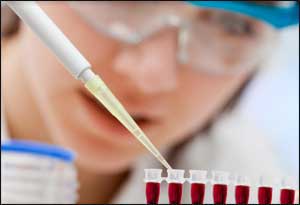- Home
- Editorial
- News
- Practice Guidelines
- Anesthesiology Guidelines
- Cancer Guidelines
- Cardiac Sciences Guidelines
- Critical Care Guidelines
- Dentistry Guidelines
- Dermatology Guidelines
- Diabetes and Endo Guidelines
- Diagnostics Guidelines
- ENT Guidelines
- Featured Practice Guidelines
- Gastroenterology Guidelines
- Geriatrics Guidelines
- Medicine Guidelines
- Nephrology Guidelines
- Neurosciences Guidelines
- Obs and Gynae Guidelines
- Ophthalmology Guidelines
- Orthopaedics Guidelines
- Paediatrics Guidelines
- Psychiatry Guidelines
- Pulmonology Guidelines
- Radiology Guidelines
- Surgery Guidelines
- Urology Guidelines
New laser technique detects soot particles in blood and urine

Researchers from UHasselt and KU Leuven have developed a brand-new method to detect soot particles in the human body.
Recent research has shown that each year, over 4.2 million individuals around the world die prematurely due to air pollution. “This type of pollution can lead to a lower weight at birth, decreased cognitive functions in children, lung cancer, and respiratory diseases, among other things,” says Professor Tim Nawrot (UHasselt). “To make sure our health norms are adequate, we need to know the concentration of soot particles in the air, but we also need reliable information about the presence of these particles (produced during the incomplete combustion of fuels such as diesel, ed.) in the body itself. A reliable estimate of this exposure on the individual level is necessary to determine safe norms.”
Urine and blood
Researchers from UHasselt and KU Leuven developed a new technique to quantify soot particles found in bodily fluids and tissues, including urine and blood. Professor Maarten Roeffaers (KU Leuven): “We expose the samples to a laser that emits extremely short light pulses, lasting a billionth of a millionth of a second. This makes the soot particles emit light in all colours, comparable to small nanolamps, making it possible for us to detect and count them.”
The research team has already used specialised lab microscopes for an epidemiological study examining the presence of soot particles on an individual level. “In a study involving 291 children, we used our new method to examine urine samples,” Professor Marcel Ameloot (UHasselt) explains. “We found a link between the quantification of soot particles in the urine – measured with our new technique – and the estimated exposure to such particles.”
Patent pending
The researchers have already filed a patent application. They will continue working on a prototype device to make the technology more widely available in the coming years. “Our goal is to eventually commercialize the device so that more studies can be conducted into individuals’ exposure to soot particles in the air. This will help to further assess and limit the health risks.”
This study was funded by the Research Foundation Flanders (FWO) and is a collaboration between the Biomedical Research Institute (BIOMED/UHasselt), the Centre for Environmental Sciences (CMK/UHasselt), and the Centre for Surface Chemistry and Catalysis (KU Leuven).

Disclaimer: This site is primarily intended for healthcare professionals. Any content/information on this website does not replace the advice of medical and/or health professionals and should not be construed as medical/diagnostic advice/endorsement or prescription. Use of this site is subject to our terms of use, privacy policy, advertisement policy. © 2020 Minerva Medical Treatment Pvt Ltd